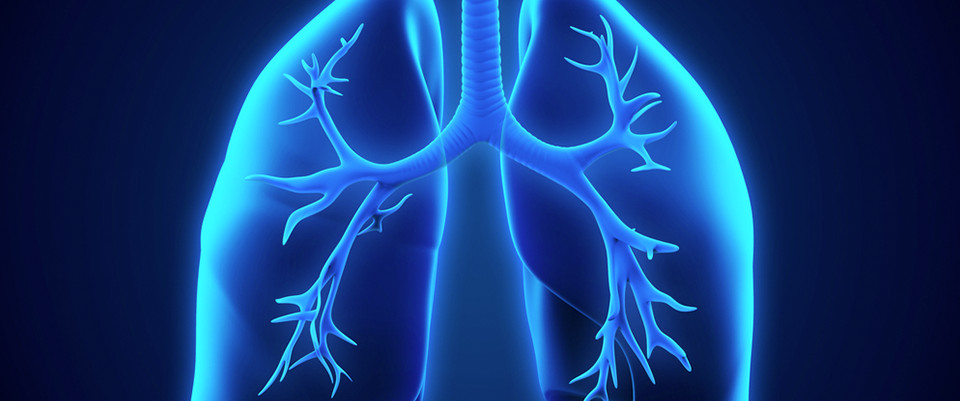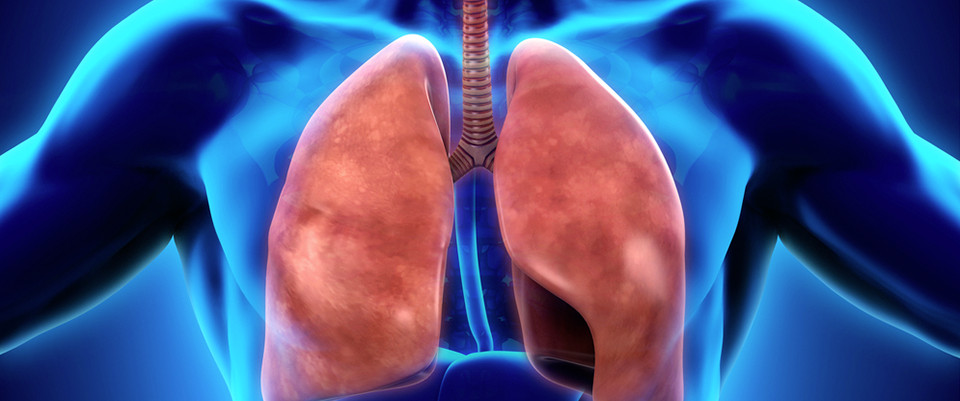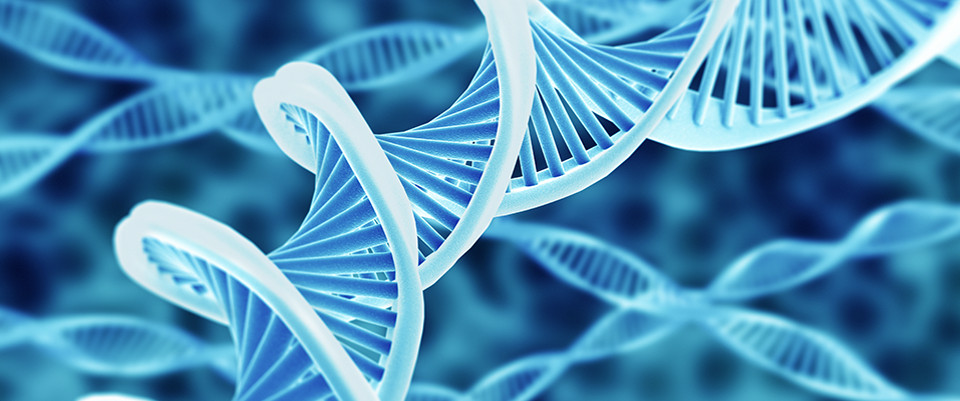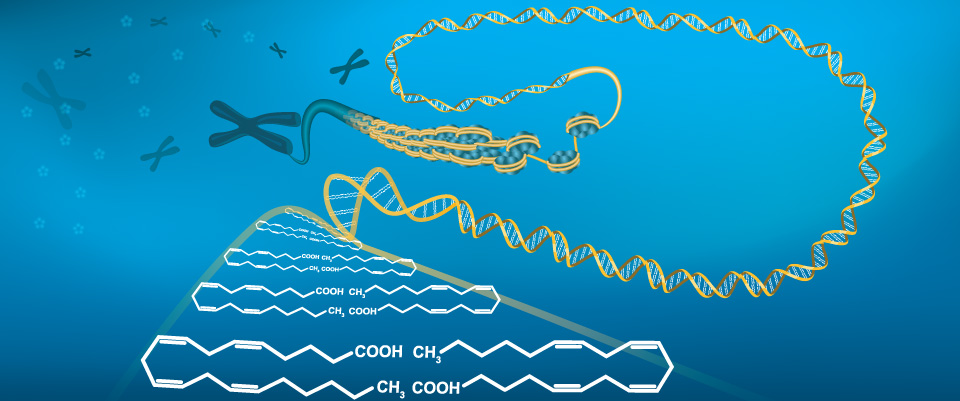PubMed
What role can metabolomics play in the discovery and development of new medicines for infectious diseases?
Related Articles
What role can metabolomics play in the discovery and development of new medicines for infectious diseases?
Bioanalysis. 2015 Apr;7(6):629-631
Authors: Kim DH, Creek DJ
PMID: 25871581 [PubMed - as supplied by publisher]
Metabolic phenotyping of the Yersinia high-pathogenicity island that regulates central carbon metabolism.
Related Articles
Metabolic phenotyping of the Yersinia high-pathogenicity island that regulates central carbon metabolism.
Analyst. 2015 Apr 14;
Authors: Yan L, Nie W, Lv H
Abstract
The high-pathogenicity island (HPI) is an important determinant of the pathogenicity of pathogenic Yersinia microbes. The HPI carries a cluster of virulence genes that chiefly account for the biosynthesis, transportation and regulation of a virulence-associated siderophore, yersiniabactin. This siderophore is also present in uropathogenic E. coli (UTI89) but not in non-uropathogenic E. coli. We sought to perform metabolic phenotyping and to understand how the presence of the HPI influences central carbon metabolism, which remains poorly understood, by combining targeted metabolomics with a genetic approach. Unexpectedly, our results revealed that uropathogenic E. coli (UPEC) with an HPI had superior metabolic homeostasis to a non-UPEC K12 strain without an HPI, thereby allowing UPEC with an HPI to flexibly adapt to a variety of growth environments. In this study, we elucidate the unrecognized regulatory effects of the HPI virulence genes on central carbon metabolism, in addition to their roles in directing yersiniabactin. These regulatory effects may be implicated in differentiating UPEC from non-UPEC.
PMID: 25870861 [PubMed - as supplied by publisher]
Simultaneous analysis of multiple neurotransmitters by hydrophilic interaction liquid chromatography coupled to tandem mass spectrometry.
Related Articles
Simultaneous analysis of multiple neurotransmitters by hydrophilic interaction liquid chromatography coupled to tandem mass spectrometry.
J Chromatogr A. 2015 Mar 30;
Authors: Tufi S, Lamoree M, de Boer J, Leonards P
Abstract
Neurotransmitters are endogenous metabolites that allow the signal transmission across neuronal synapses. Their biological role is crucial for many physiological functions and their levels can be changed by several diseases. Because of their high polarity, hydrophilic interaction liquid chromatography (HILIC) is a promising tool for neurotransmitter analysis. Due to the large number of HILIC stationary phases available, an evaluation of the column performances and retention behaviors has been performed on five different commercial HILIC packing materials (silica, amino, amide and two zwitterionic stationary phases). Several parameters like the linear correlation between retention and the distribution coefficient (logD), the separation factor k and the column resolution Rs have been investigated and the column performances have been visualized with a heat map and hierarchical clustering analysis. An optimized and validated HILIC-MS/MS method based on the ZIC-cHILIC column is proposed for the simultaneous detection and quantification of twenty compounds consisting of neurotransmitters, precursors and metabolites: 3-methoxytyramine (3-MT), 5-hydroxyindoleacetic acid (5-HIAA), 5-hydroxy-L-tripthophan, acetylcholine, choline, L-3,4-dihydroxyphenylalanine (L-DOPA), dopamine, epinephrine, γ-aminobutyric acid (GABA), glutamate, glutamine, histamine, histidine, L-tryptophan, L-tyrosine, norepinephrine, normetanephrine, phenylalanine, serotonin and tyramine. The method was applied to neuronal metabolite profiling of the central nervous system of the freshwater snail Lymnaea stagnalis. This method is suitable to explore neuronal metabolism and its alteration in different biological matrices.
PMID: 25869798 [PubMed - as supplied by publisher]
Untargeted Metabolic Profiling of Vitis vinifera during Fungal Degradation.
Related Articles
Untargeted Metabolic Profiling of Vitis vinifera during Fungal Degradation.
FEMS Microbiol Lett. 2015 Apr 13;
Authors: Karpe AV, Beale DJ, Morrison PD, Harding IH, Palombo EA
Abstract
This paper illustrates the application of an untargeted metabolic profiling analysis of winery-derived biomass degraded using four filamentous fungi (Trichoderma harzianum, Aspergillus niger, Penicillium chrysogenum and Penicillium citrinum) and a yeast (Saccharomyces cerevisiae). Analysis of the metabolome resulted in the identification of 233 significant peak features (p<0.05; Fold Change [FC]>2 and signal to noise ratio >50) using gas chromatography-mass spectrometry (GC-MS) followed by statistical chemometric analysis. Furthermore, A. niger and P. chrysogenum produced higher biomass degradation due to considerable β-glucosidase and xylanase activities. The major metabolites generated during fungal degradation which differentiated the metabolic profiles of fungi included sugars, sugar acids, organic acids and fatty acids. Although, P. chrysogenum could degrade hemicelluloses due to its high β-glucosidase and xylanase activities, it could not utilize the resultant pentoses, which A. niger and P. citrinum could do efficiently, thus indicating a need of mixed fungal culture to improve the biomass degradation. S. cerevisiae, a non-cellulose degrader, exhibited sugar accumulation during the fermentation. P. chrysogenum was observed to degrade about 2% lignin, a property not observed in other fungi. This study emphasized the differential fungal metabolic behaviour and demonstrated the potential of metabolomics in optimising degradation or manipulating pathways to increase yields of products of interest.
PMID: 25868913 [PubMed - as supplied by publisher]
Quorum sensing is accompanied by global metabolic changes in the opportunistic human pathogen, Pseudomonas aeruginosa.
Related Articles
Quorum sensing is accompanied by global metabolic changes in the opportunistic human pathogen, Pseudomonas aeruginosa.
J Bacteriol. 2015 Apr 13;
Authors: Davenport P, Griffin JL, Welch M
Abstract
Pseudomonas aeruginosa uses N-acyl-homoserine lactone (AHL)-dependent quorum sensing (QS) systems to control the expression of secreted effectors. These effectors can be crucial to the ecological fitness of the bacterium, playing roles in nutrient acquisition, microbial competition and virulence. In this study, we investigated the metabolic consequences of AHL-dependent QS by monitoring the metabolic profile(s) of a lasI rhlI double mutant (unable to make QS signaling molecules) and its wild-type progenitor as they progressed through the growth curve. Analysis of culture supernatants by (1)H-NMR spectroscopy revealed that at the point where AHL concentrations peaked in the wild-type, the metabolic footprints (i.e., extracellular metabolites) of the wild-type and lasI rhlI mutant diverged. Subsequent GCMS based analysis of the intracellular metabolome revealed QS-dependent perturbations in around one third of all identified metabolites, including altered concentrations of TCA cycle intermediates, amino acids and fatty acids. Further targeted FAME GCMS-based profiling of the cellular total fatty acid pools revealed that QS leads to changes associated with decreased membrane fluidity and higher chemical stability. However, not all of the changes we observed were necessarily a direct consequence of QS; LCMS analyses revealed that polyamine levels were elevated in the lasI rhlI mutant, perhaps a response to the absence of QS-dependent adaptations. Our data suggest that QS-leads to a global re-adjustment in central metabolism and provide new insight into the metabolic changes associated with QS during stationary phase adaptation.
IMPORTANCE: Quorum sensing (QS) is a transcriptional regulatory mechanism that allows bacteria to coordinate their gene expression profile with the population cell density. The opportunistic human pathogen, Pseudomonas aeruginosa, uses QS to control the production of secreted virulence factors. In this study, we show that QS elicits a global "metabolic rewiring" in P. aeruginosa. This metabolic re-routing of fluxes is consistent with a variety of drivers, ranging from altered QS-dependent transcription of "metabolic genes", through to the effect(s) of global "metabolic readjustment" as a consequence of QS-dependent exoproduct synthesis, as well as a general stress response, among others. To our knowledge, this is the first study of its kind to assess the global impact of QS on the metabolome.
PMID: 25868647 [PubMed - as supplied by publisher]
Experimental strategies for functional annotation and metabolism discovery: targeted screening of solute binding proteins and unbiased panning of metabolomes.
Related Articles
Experimental strategies for functional annotation and metabolism discovery: targeted screening of solute binding proteins and unbiased panning of metabolomes.
Biochemistry. 2015 Jan 27;54(3):909-31
Authors: Vetting MW, Al-Obaidi N, Zhao S, San Francisco B, Kim J, Wichelecki DJ, Bouvier JT, Solbiati JO, Vu H, Zhang X, Rodionov DA, Love JD, Hillerich BS, Seidel RD, Quinn RJ, Osterman AL, Cronan JE, Jacobson MP, Gerlt JA, Almo SC
Abstract
The rate at which genome sequencing data is accruing demands enhanced methods for functional annotation and metabolism discovery. Solute binding proteins (SBPs) facilitate the transport of the first reactant in a metabolic pathway, thereby constraining the regions of chemical space and the chemistries that must be considered for pathway reconstruction. We describe high-throughput protein production and differential scanning fluorimetry platforms, which enabled the screening of 158 SBPs against a 189 component library specifically tailored for this class of proteins. Like all screening efforts, this approach is limited by the practical constraints imposed by construction of the library, i.e., we can study only those metabolites that are known to exist and which can be made in sufficient quantities for experimentation. To move beyond these inherent limitations, we illustrate the promise of crystallographic- and mass spectrometric-based approaches for the unbiased use of entire metabolomes as screening libraries. Together, our approaches identified 40 new SBP ligands, generated experiment-based annotations for 2084 SBPs in 71 isofunctional clusters, and defined numerous metabolic pathways, including novel catabolic pathways for the utilization of ethanolamine as sole nitrogen source and the use of d-Ala-d-Ala as sole carbon source. These efforts begin to define an integrated strategy for realizing the full value of amassing genome sequence data.
PMID: 25540822 [PubMed - indexed for MEDLINE]
Systemic, cerebral and skeletal muscle ketone body and energy metabolism during acute hyper-D-β-hydroxybutyratemia in post-absorptive healthy males.
Related Articles
Systemic, cerebral and skeletal muscle ketone body and energy metabolism during acute hyper-D-β-hydroxybutyratemia in post-absorptive healthy males.
J Clin Endocrinol Metab. 2015 Feb;100(2):636-43
Authors: Mikkelsen KH, Seifert T, Secher NH, Grøndal T, van Hall G
Abstract
CONTEXT: Ketone bodies are substrates during fasting and when on a ketogenic diet not the least for the brain and implicated in the management of epileptic seizures and dementia. Moreover, D-β-hydroxybutyrate (HOB) is suggested to reduce blood glucose and fatty acid levels.
OBJECTIVES: The objectives of this study were to quantitate systemic, cerebral, and skeletal muscle HOB utilization and its effect on energy metabolism.
DESIGN: Single trial.
SETTING: Hospital.
PARTICIPANT: Healthy post-absorptive males (n = 6).
INTERVENTIONS: Subjects were studied under basal condition and three consecutive 1-hour periods with a 3-, 6-, and 12-fold increased HOB concentration via HOB infusion.
MAIN OUTCOME MEASURES: Systemic, cerebral, and skeletal muscle HOB kinetics, oxidation, glucose turnover, and lipolysis via arterial, jugular, and femoral venous differences in combination with stable isotopically labeled HOB, glucose, and glycerol, infusion.
RESULTS: An increase in HOB from the basal 160-450 μmol/L elicited 14 ± 2% reduction (P = .03) in glucose appearance and 37 ± 4% decrease (P = .03) in lipolytic rate while insulin and glucagon were unchanged. Endogenous HOB appearance was reduced in a dose-dependent manner with complete inhibition at the highest HOB concentration (1.7 mmol/L). Cerebral HOB uptake and subsequent oxidation was linearly related to the arterial HOB concentration. Resting skeletal muscle HOB uptake showed saturation kinetics.
CONCLUSION: A small increase in the HOB concentration decreases glucose production and lipolysis in post-absorptive healthy males. Moreover, cerebral HOB uptake and oxidation rates are linearly related to the arterial HOB concentration of importance for modifying brain energy utilization, potentially of relevance for patients with epileptic seizures and dementia.
PMID: 25415176 [PubMed - indexed for MEDLINE]
Metabolic control of Ca2+/calmodulin-dependent protein kinase II (CaMKII)-mediated caspase-2 suppression by the B55β/protein phosphatase 2A (PP2A).
Related Articles
Metabolic control of Ca2+/calmodulin-dependent protein kinase II (CaMKII)-mediated caspase-2 suppression by the B55β/protein phosphatase 2A (PP2A).
J Biol Chem. 2014 Dec 26;289(52):35882-90
Authors: Huang B, Yang CS, Wojton J, Huang NJ, Chen C, Soderblom EJ, Zhang L, Kornbluth S
Abstract
High levels of metabolic activity confer resistance to apoptosis. Caspase-2, an apoptotic initiator, can be suppressed by high levels of nutrient flux through the pentose phosphate pathway. This metabolic control is exerted via inhibitory phosphorylation of the caspase-2 prodomain by activated Ca(2+)/calmodulin-dependent protein kinase II (CaMKII). We show here that this activation of CaMKII depends, in part, on dephosphorylation of CaMKII at novel sites (Thr(393)/Ser(395)) and that this is mediated by metabolic activation of protein phosphatase 2A in complex with the B55β targeting subunit. This represents a novel locus of CaMKII control and also provides a mechanism contributing to metabolic control of apoptosis. These findings may have implications for metabolic control of the many CaMKII-controlled and protein phosphatase 2A-regulated physiological processes, because both enzymes appear to be responsive to alterations in glucose metabolized via the pentose phosphate pathway.
PMID: 25378403 [PubMed - indexed for MEDLINE]
Plasma metabolic profiling analysis of nephrotoxicity induced by acyclovir using metabonomics coupled with multivariate data analysis.
Related Articles
Plasma metabolic profiling analysis of nephrotoxicity induced by acyclovir using metabonomics coupled with multivariate data analysis.
J Pharm Biomed Anal. 2014 Aug;97:151-6
Authors: Zhang X, Li Y, Zhou H, Fan S, Zhang Z, Wang L, Zhang Y
Abstract
Acyclovir (ACV) is an antiviral agent. However, its use is limited by adverse side effect, particularly by its nephrotoxicity. Metabonomics technology can provide essential information on the metabolic profiles of biofluids and organs upon drug administration. Therefore, in this study, mass spectrometry-based metabonomics coupled with multivariate data analysis was used to identify the plasma metabolites and metabolic pathways related to nephrotoxicity caused by intraperitoneal injection of low (50mg/kg) and high (100mg/kg) doses of acyclovir. Sixteen biomarkers were identified by metabonomics and nephrotoxicity results revealed the dose-dependent effect of acyclovir on kidney tissues. The present study showed that the top four metabolic pathways interrupted by acyclovir included the metabolisms of arachidonic acid, tryptophan, arginine and proline, and glycerophospholipid. This research proves the established metabonomic approach can provide information on changes in metabolites and metabolic pathways, which can be applied to in-depth research on the mechanism of acyclovir-induced kidney injury.
PMID: 24863373 [PubMed - indexed for MEDLINE]
Dietary nicotinic acid supplementation ameliorates chronic alcohol-induced fatty liver in rats.
Related Articles
Dietary nicotinic acid supplementation ameliorates chronic alcohol-induced fatty liver in rats.
Alcohol Clin Exp Res. 2014 Jul;38(7):1982-92
Authors: Li Q, Xie G, Zhang W, Zhong W, Sun X, Tan X, Sun X, Jia W, Zhou Z
Abstract
BACKGROUND: Alcohol abuse frequently causes niacin deficiency in association with the development of alcoholic liver disease. The objective of the present study was to determine whether dietary nicotinic acid (NA) deficiency exaggerates and whether dietary NA supplementation alleviates alcohol-induced fatty liver.
METHODS: Male Sprague-Dawley rats were pair-fed with 4 isocaloric liquid diets: control, ethanol (EtOH), EtOH with dietary NA deficiency, and EtOH with dietary NA supplementation, respectively, for 8 weeks. The control and EtOH diets contained normal levels of NA (7.5 mg/l). Dietary NA deficiency (0 mg NA/l) was achieved by removing NA from the vitamin mix, while NA was added to the liquid diet at 750 mg/l for dietary NA supplementation.
RESULTS: Chronic EtOH feeding induced significant lipid accumulation in the liver, which was not worsened by dietary NA deficiency, but was ameliorated by dietary NA supplementation. Liver total NAD, NAD(+) , and NADH levels were remarkably higher in the NA supplemented group than the NA deficient or EtOH alone groups. Dietary NA supplementation to EtOH-fed rats increased the protein levels of hepatic cytochrome P450 4A1 (CYP4A1) and acyl-coenzyme A oxidase 1 without affecting their mRNA levels. Interestingly, we found dietary NA supplementation reduced the ubiquitination level of CYP4A1. In addition, hepatic fatty acid synthase expression was reduced, while the serum β-hydroxybutyrate and adiponectin concentrations were significantly elevated by dietary NA supplementation. Moreover, dietary NA supplementation modulated EtOH-perturbed liver and serum metabolite profiles.
CONCLUSIONS: These results demonstrate that alcoholic fatty liver was not exaggerated by dietary NA deficiency, but was ameliorated by dietary NA supplementation. Increased hepatic fatty acid oxidation and decreased hepatic de novo lipogenesis contribute to the effects of dietary NA supplementation.
PMID: 24848081 [PubMed - indexed for MEDLINE]
Metabolomic profiling of schizophrenia patients at risk for metabolic syndrome.
Related Articles
Metabolomic profiling of schizophrenia patients at risk for metabolic syndrome.
Int J Neuropsychopharmacol. 2014 Aug;17(8):1139-48
Authors: Paredes RM, Quinones M, Marballi K, Gao X, Valdez C, Ahuja SS, Velligan D, Walss-Bass C
Abstract
Second-generation antipsychotics (SGAs) are commonly used to treat schizophrenia. However, SGAs cause metabolic disturbances that can manifest as metabolic syndrome (MetS) in a subset of patients. The causes for these metabolic disturbances remain unclear. We performed a comprehensive metabolomic profiling of 60 schizophrenia patients undergoing treatment with SGAs that puts them at high (clozapine, olanzapine), medium (quetiapine, risperidone), or low (ziprasidone, aripiprazole) risk for developing MetS, compared to a cohort of 20 healthy controls. Multiplex immunoassays were used to measure 13 metabolic hormones and adipokines in plasma. Mass spectrometry was used to determine levels of lipids and polar metabolites in 29 patients and 10 controls. We found that levels of insulin and tumor necrosis factor alpha (TNF-α) were significantly higher (p < 0.005) in patients at medium and high risk for MetS, compared to controls. These molecules are known to be increased in individuals with high body fat content and obesity. On the other hand, adiponectin, a molecule responsible for control of food intake and body weight, was significantly decreased in patients at medium and high risk for MetS (p < 0.005). Further, levels of dyacylglycerides (DG), tryacylglycerides (TG) and cholestenone were increased, whereas α-Ketoglutarate and malate, important mediators of the tricarboxylic acid (TCA) cycle, were significantly decreased in patients compared to controls. Our studies suggest that high- and medium-risk SGAs are associated with disruption of energy metabolism pathways. These findings may shed light on the molecular underpinnings of antipsychotic-induced MetS and aid in design of novel therapeutic approaches to reduce the side effects associated with these drugs.
PMID: 24565079 [PubMed - indexed for MEDLINE]
Sebaceous gland - A major player in skin homeostasis.
Sebaceous gland - A major player in skin homeostasis.
Exp Dermatol. 2015 Apr 11;
Authors: Picardo M, Mastrofrancesco A, Bíró T
Abstract
Structural and functional interactions among different skin cell types maintain cutaneous homeostasis. In normal skin, dermal fibroblasts and basal layer keratinocytes establish the extracellular matrix which provides signalling molecules that promote keratinocyte growth and differentiation. Keratinocytes, in turn, stratify to form the epithelial layers and provide mechanical integrity and barrier function for the tissue, and also signal to fibroblasts for continued tissue homeostasis. This article is protected by copyright. All rights reserved.
PMID: 25865503 [PubMed - as supplied by publisher]
Cardiac steatosis potentiates angiotensin II effects in the heart.
Related Articles
Cardiac steatosis potentiates angiotensin II effects in the heart.
Am J Physiol Heart Circ Physiol. 2015 Feb 15;308(4):H339-50
Authors: Glenn DJ, Cardema MC, Ni W, Zhang Y, Yeghiazarians Y, Grapov D, Fiehn O, Gardner DG
Abstract
Lipid accumulation in the heart is associated with obesity and diabetes and may play an important role in the pathogenesis of heart failure. The renin-angiotensin system is also thought to contribute to cardiovascular morbidity in obese and diabetic patients. We hypothesized that the presence of lipid within the myocyte might potentiate the cardiomyopathic effects of ANG II in the cardiac diacylglycerol acyl transferase 1 (DGAT1) transgenic mouse model of myocyte steatosis. Treatment with ANG II resulted in a similar increase in blood pressure in both nontransgenic and DGAT1 transgenic mice. However, ANG II in DGAT1 transgenic mice resulted in a marked increase in interstitial fibrosis and a reduction in systolic function compared with nontransgenic littermates. Lipidomic analysis revealed that >20% of lipid species were significantly altered between nontransgenic and DGAT1 transgenic animals, whereas 3% were responsive to ANG II administration. ROS were also increased by ANG II in DGAT1 transgenic hearts. ANG II treatment resulted in increased expression of transforming growth factor (TGF)-β2 and the type I TGF-β receptor as well as increased phosphorylation of Smad2 in DGAT1 transgenic hearts. Injection of neutralizing antibodies to TGF-β resulted in a reduction in fibrosis in DGAT1 transgenic hearts treated with ANG II. These results suggest that myocyte steatosis amplifies the fibrotic effects of ANG II through mechanisms that involve activation of TGF-β signaling and increased production of ROS.
PMID: 25485904 [PubMed - indexed for MEDLINE]
Obesity superimposed on aging magnifies inflammation and delays the resolving response after myocardial infarction.
Related Articles
Obesity superimposed on aging magnifies inflammation and delays the resolving response after myocardial infarction.
Am J Physiol Heart Circ Physiol. 2015 Feb 15;308(4):H269-80
Authors: Lopez EF, Kabarowski JH, Ingle KA, Kain V, Barnes S, Crossman DK, Lindsey ML, Halade GV
Abstract
Polyunsaturated fatty acid (PUFA) intake has increased over the last 100 yr, contributing to the current obesogenic environment. Obesity and aging are prominent risk factors for myocardial infarction (MI). How obesity interacts with aging to alter the post-MI response, however, is unclear. We tested the hypothesis that obesity in aging mice would impair the resolution of post-MI inflammation. PUFA diet (PUFA aging group) feeding to 12-mo-old C57BL/6J mice for 5 mo showed higher fat mass compared with standard lab chow (LC)-fed young (LC young group; 3-5 mo old) or aging alone control mice (LC aging group). LC young, LC aging, and PUFA aging mice were subjected to coronary artery ligation to induce MI. Despite similar infarct areas post-MI, plasma proteomic profiling revealed higher VCAM-1 in the PUFA aging group compared with LC young and LC aging groups, leading to increased neutrophil infiltration in the PUFA aging group (P<0.05). Macrophage inflammatory protein-1γ and CD40 were also increased at day 1, and myeloperoxidase remained elevated at day 5, an observation consistent with delayed wound healing in the PUFA aging group. Lipidomic analysis showed higher levels of arachidonic acid and 12(S)-hydroxyeicosatetraenoic acid at day 1 post-MI in the PUFA aging group compared with the LC aging group (all P<0.05), thereby mediating neutrophil extravasation in the PUFA aging group. The inflammation-resolving enzymes 5-lipoxygenase, cyclooxygenase-2, and heme oxyegnase-1 were altered to delay wound healing post-MI in the PUFA aging group compared with LC young and LC aging groups. PUFA aging magnifies the post-MI inflammatory response and impairs the healing response by stimulating prolonged neutrophil trafficking and proinflammatory lipid mediators.
PMID: 25485899 [PubMed - indexed for MEDLINE]
Effect of pre- and postnatal growth and post-weaning activity on glucose metabolism in the offspring.
Related Articles
Effect of pre- and postnatal growth and post-weaning activity on glucose metabolism in the offspring.
J Endocrinol. 2015 Feb;224(2):171-82
Authors: Dellschaft NS, Alexandre-Gouabau MC, Gardner DS, Antignac JP, Keisler DH, Budge H, Symonds ME, Sebert SP
Abstract
Maternal caloric restriction during late gestation reduces birth weight, but whether long-term adverse metabolic outcomes of intra-uterine growth retardation (IUGR) are dependent on either accelerated postnatal growth or exposure to an obesogenic environment after weaning is not established. We induced IUGR in twin-pregnant sheep using a 40% maternal caloric restriction commencing from 110 days of gestation until term (∼147 days), compared with mothers fed to 100% of requirements. Offspring were reared either as singletons to accelerate postnatal growth or as twins to achieve standard growth. To promote an adverse phenotype in young adulthood, after weaning, offspring were reared under a low-activity obesogenic environment with the exception of a subgroup of IUGR offspring, reared as twins, maintained in a standard activity environment. We assessed glucose tolerance together with leptin and cortisol responses to feeding in young adulthood when the hypothalamus was sampled for assessment of genes regulating appetite control, energy and endocrine sensitivity. Caloric restriction reduced maternal plasma glucose, raised non-esterified fatty acids, and changed the metabolomic profile, but had no effect on insulin, leptin, or cortisol. IUGR offspring whose postnatal growth was enhanced and were obese showed insulin and leptin resistance plus raised cortisol. This was accompanied by increased hypothalamic gene expression for energy and glucocorticoid sensitivity. These long-term adaptations were reduced but not normalized in IUGR offspring whose postnatal growth was not accelerated and remained lean in a standard post-weaning environment. IUGR results in an adverse metabolic phenotype, especially when postnatal growth is enhanced and offspring progress to juvenile-onset obesity.
PMID: 25416820 [PubMed - indexed for MEDLINE]
Airway metabolic anomalies in adolescents with bronchopulmonary dysplasia: new insights from the metabolomic approach.
Related Articles
Airway metabolic anomalies in adolescents with bronchopulmonary dysplasia: new insights from the metabolomic approach.
J Pediatr. 2015 Feb;166(2):234-9.e1
Authors: Carraro S, Giordano G, Pirillo P, Maretti M, Reniero F, Cogo PE, Perilongo G, Stocchero M, Baraldi E
Abstract
OBJECTIVES: To assess a group of adolescents with bronchopulmonary dysplasia (BPD) from a biochemical-metabolic standpoint, applying the metabolomic approach to studying their exhaled breath condensate (EBC).
STUDY DESIGN: Twenty adolescents with BPD (mean age 14.8 years) and 15 healthy controls (mean age 15.2 years) were recruited for EBC collection, exhaled nitric oxide measurement, and spirometry. The EBC samples were analyzed using a metabolomic approach based on mass spectrometry. The obtained spectra were analyzed using multivariate statistical analysis tools.
RESULTS: A reliable Orthogonal Projections to Latent Structures-Discriminant Analysis model showed a clear discrimination between cases of BPD and healthy controls (R(2) = 0.95 and Q(2) = 0.92). The search for putative biomarkers identified an altered complex lipid profile in the adolescents with BPD.
CONCLUSIONS: The metabolomic analysis of EBC distinguishes cases of BPD from healthy individuals, suggesting that the lung of survivors of BPD is characterized by long-term metabolic abnormalities. The search for putative biomarkers indicated a possible role of an altered surfactant composition, which may persist far beyond infancy.
PMID: 25294602 [PubMed - indexed for MEDLINE]
Plasma free amino acid profiling of esophageal cancer using high-performance liquid chromatography spectroscopy.
Related Articles
Plasma free amino acid profiling of esophageal cancer using high-performance liquid chromatography spectroscopy.
World J Gastroenterol. 2014 Jul 14;20(26):8653-9
Authors: Ma H, Hasim A, Mamtimin B, Kong B, Zhang HP, Sheyhidin I
Abstract
AIM: To perform plasma free amino acid (PFAA) profiling of esophageal squamous cell carcinoma (ESCC) patients at different pathological stages and healthy subjects.
METHODS: Plasma samples from ESCC patients (n = 51) and healthy control adults (n = 60) were analyzed by high-performance liquid chromatography (HPLC). The ESCC patients included moderate/poorly-differentiation (n = 24), lymph node metastasis (n = 17) and clinical stage > Ib2 (n = 36). Partial least squares discriminant analysis was performed to demonstrate that the PFAA metabolic patterns enabled discrimination between ESCC patients and controls, and the Student t test was applied to assess significant differences in PFAA concentrations between the two groups.
RESULTS: There were significant differences in the PFAA profiles between controls and ESCC patients. Compared with healthy controls, the levels of Asp, Glu, Gly, His, Thr, Tau, Ala, Met, Ile, Leu, and Phe were decreased in ESCC patients, but Cys was increased. There exists a strong correlation between PFAA profiles and clinicopathological characteristics in ESCC patients. The levels of many PFAAs (i.e., Glu, Asp, Ser, Gly, Tau, Ala, Tyr, Val, Ile, and Leu) were related to pathological grading, lymph node metastasis, and ESCC clinical stage. Very good discrimination between ESCC patients and control subjects was achieved by multivariate modeling of plasma profiles.
CONCLUSION: HPLC-based plasma profiling analysis was shown to be an effective approach to differentiate between ESCC patients and controls. PFAA profiles may have potential value for screening or diagnosing ESCC.
PMID: 25024622 [PubMed - indexed for MEDLINE]
Solving the jigsaw puzzle of wound-healing potato cultivars: metabolite profiling and antioxidant activity of polar extracts.
Related Articles
Solving the jigsaw puzzle of wound-healing potato cultivars: metabolite profiling and antioxidant activity of polar extracts.
J Agric Food Chem. 2014 Aug 6;62(31):7963-75
Authors: Dastmalchi K, Cai Q, Zhou K, Huang W, Serra O, Stark RE
Abstract
Potato (Solanum tuberosum L.) is a worldwide food staple, but substantial waste accompanies the cultivation of this crop due to wounding of the outer skin and subsequent unfavorable healing conditions. Motivated by both economic and nutritional considerations, this metabolite profiling study aims to improve understanding of closing layer and wound periderm formation and guide the development of new methods to ensure faster and more complete healing after skin breakage. The polar metabolites of wound-healing tissues from four potato cultivars with differing patterns of tuber skin russeting (Norkotah Russet, Atlantic, Chipeta, and Yukon Gold) were analyzed at three and seven days after wounding, during suberized closing layer formation and nascent wound periderm development, respectively. The polar extracts were assessed using LC-MS and NMR spectroscopic methods, including multivariate analysis and tentative identification of 22 of the 24 biomarkers that discriminate among the cultivars at a given wound-healing time point or between developmental stages. Differences among the metabolites that could be identified from NMR- and MS-derived biomarkers highlight the strengths and limitations of each method, also demonstrating the complementarity of these approaches in terms of assembling a complete molecular picture of the tissue extracts. Both methods revealed that differences among the cultivar metabolite profiles diminish as healing proceeds during the period following wounding. The biomarkers included polyphenolic amines, flavonoid glycosides, phenolic acids and glycoalkaloids. Because wound healing is associated with oxidative stress, the free radical scavenging activities of the extracts from different cultivars were measured at each wounding time point, revealing significantly higher scavenging activity of the Yukon Gold periderm especially after 7 days of wounding.
PMID: 24998264 [PubMed - indexed for MEDLINE]
Neurochemical evaluation of brain function with 1H magnetic resonance spectroscopy in patients with fragile X syndrome.
Related Articles
Neurochemical evaluation of brain function with 1H magnetic resonance spectroscopy in patients with fragile X syndrome.
Am J Med Genet A. 2014 Jan;164A(1):99-105
Authors: Utine GE, Akpınar B, Arslan U, Kiper PÖ, Volkan-Salancı B, Alanay Y, Aktaş D, Haliloğlu G, Oğuz KK, Boduroğlu K, Alikaşifoğlu M
Abstract
Fragile X syndrome (FXS) is the most common hereditary disorder of intellectual disability. Cognitive deficits involve executive function, attention, learning and memory. Advanced neuroimaging techniques are available, and (1)H magnetic resonance spectroscopy (MRS) can be used as a complementary method to MR imaging to understand disease processes in brain, by in vivo demonstration of brain metabolites. MRS was performed in 13 male patients with FXS full mutation, and 13 age- and sex-matched healthy controls. FXS diagnosis was based on clinical evaluation, followed by detection of FMR1 full mutation. Axial T2 TSE, sagittal T1 SE and coronal 3D MPRAGE images were obtained for both morphological imaging and voxel localization. Following evaluation of conventional images, multivoxel MRS (CSI) through supraventricular white matter and single voxel MRS (svs) with an intermediate echo time (TE:135 ms) from the cerebellar vermis were performed. Choline/Creatine (Cho/Cr), N-acetyl aspartate/Creatine (NAA/Cr), and Choline/N-acetyl aspartate (Cho/NAA) ratios were examined at right frontal (RF), left frontal (LF), right parietal (RP), left parietal (LP), and cerebellar vermian (C) white matter. Statistical analyses were done using t-test and Mann-Whitney U tests. A statistically significant difference was observed in RP Cho/NAA ratio (cell membrane marker/neuroaxonal marker), FXS patients having lower levels than controls (P = 0.016). The results should be evaluated cautiously in parallel to consequences in brain metabolism leading to alterations in neurotransmitter levels, osmoregulation, energy metabolism and oxidative stress response described in animal models. MRS may serve to define a metabolic signature and biomarkers associated with FXS.
PMID: 24259304 [PubMed - indexed for MEDLINE]
Monitoring tryptophan metabolism after exposure to hexaconazole and the enantioselective metabolism of hexaconazole in rat hepatocytes in vitro.
Monitoring tryptophan metabolism after exposure to hexaconazole and the enantioselective metabolism of hexaconazole in rat hepatocytes in vitro.
J Hazard Mater. 2015 Apr 3;295:9-16
Authors: Wang Y, Zhu W, Qiu J, Wang X, Zhang P, Yan J, Zhou Z
Abstract
In the present study, the enantioselective metabolism, cytotoxicity of hexaconazole and its influence on tryptophan metabolism in rat hepatocytes in vitro were investigated. Following the exposure of primary rat hepatocytes to rac-hexaconazole, the concentrations of its enantiomers in the media were determined by chiral high-performance liquid chromatography-tandem mass spectrometry (HPLC-MS/MS). The half-lives (t1/2) of (+)-hexaconazole and (-)-hexaconazole were 5.17h and 19.80h, respectively, indicating that the metabolic process was enantioselective with (-)-hexaconazole enrichment. Using the MTT method, the EC50 values of rac-hexaconazole, (+)-hexaconazole and (-)-hexaconazole after 12h of exposure were determined to be 71.62, 62.71 and 67.94μM, respectively. Tryptophan metabolism was monitored using metabolomics profiling techniques. Hexaconazole and its enantiomers caused the down-regulation of tryptophan levels and the up-regulation of kynurenine (KYN) levels, suggesting a role for hexaconazole in the activation of the KYN pathway and providing information for the mechanism of its toxicity.
PMID: 25863579 [PubMed - as supplied by publisher]











